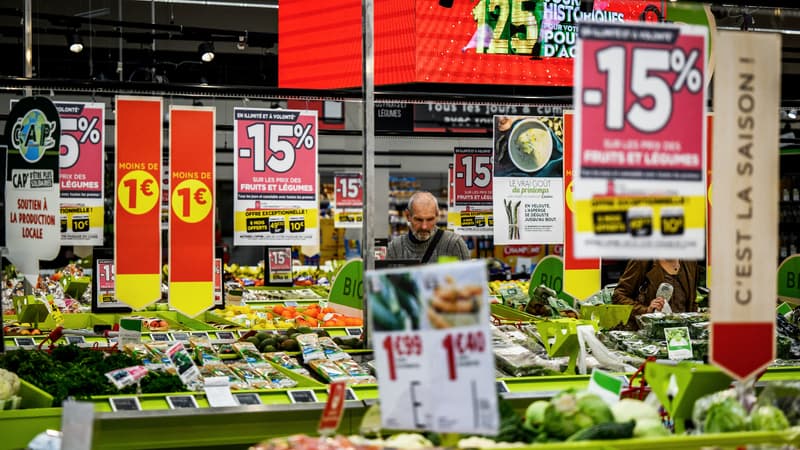This is a double whammy for consumers. In addition to having suffered price inflation in supermarkets that the Circana institute estimates at 21.1% in two years, promotions that in theory allow you to reduce the bill are increasingly scarce.
During the first 11 months of 2023, the number of promotional references fell by 4.6% according to Circana in large distribution compared to the same period in 2022. A phenomenon that has accelerated since May and the start of conversations between suppliers and distributors. to initiate price reductions. According to NielsenIQ, the number of promotions fell by even 14%.
The most affected big brand products
These are products from big brands that are increasingly sold at bargain prices. Their number fell by 6.5% in one year, compared to an increase of 4% for private label references.
Fewer promotions, fewer discounts and promotional mechanisms that are also increasingly less attractive. The system preferred by consumers is immediate delivery at the checkout. However, it is these reductions that have abandoned supermarkets, with a 29% drop in the number of references affected in one year.
The French buy less frequently on sales
As a result, as purchasing power is tested, the French are putting fewer promotions in their shopping carts than a year ago. The percentage of sales made through promotion increased from 15.6% in 2022 to 15.1% in 2023. The most paradoxical thing is that 46% of consumers, according to a PwC survey, say they look for discounts to reduce their expenses (the double that during the same survey carried out a year earlier).
The absence of promotions may not be the only explanation for this decline in purchases. Discounted products can also be victims of consumer arbitrage. An apparent paradox that, however, is explained by the type of products that are usually sold in promotion.
More sober, the consumer would tend to move away from the less essential products that happen to be those that are promoted most frequently.
Although the number of discounts is decreasing, there are still significant disparities across departments and brands. It is at the national level in hygiene and beauty where promotions have decreased the most in 2023 with 10% fewer products, according to Circana. Followed by the food section (-4%) and the self-service fee (-4%). Others, however, offer more, such as liquids (+1%) but with very significant differences depending on the product. Soft drinks have increased considerably (+10%), as have beers (+8%), so water promotions have plummeted by 17% in one year.
Sharp drop in promotions at Carrefour and E.Leclerc
As for the brands, it is in Carrefour Market (-16.5%), E.Leclerc (-15.1%), Casino Hyper Frais (-10.9%) and Carrefour (-10.7%) where the The fall was sharper in the second quarter of the year. 2023 according to NielsenIQ. In Intermarché (-3.5%) and in Auchan hypermarkets (-1.3%), the fall is more contained. Only two brands increased their promotional offer during the period: Auchan supermarkets (+5.1%) and Monoprix stores (+0.1%).
How can we explain this drop in promotion in a context in which brands fight with their suppliers to obtain price reductions? If we highlight the context of regulatory tightening that tends to limit promotions such as Egalim and the future Descrozaille law, this is not the only explanation. Limiting discounts is a hidden way for manufacturers to boost their price increases.
Promotions financed by manufacturers.
You should know that promotions are financed almost exclusively not by the brands from which they are purchased but by the suppliers. When Carrefour Market offers, as is currently the case, a 50% discount on the second pack of six cans of Oasis Tropical, it is not Carrefour who gives this “gift” to the customer but the manufacturer of the drink. The same goes for the 8-pack of Perle de Lait yogurt tubs currently on sale “buy 2, get 1 free” at E.Leclerc. It is Yoplait who uses its margin to offer this discount and appear in the distributor’s brochure.
There is nothing illegal about this mechanism and the conditions of the discount, as well as its financing, appear clearly in the commercial contracts. Logically, they are the subject of negotiations between manufacturers and distributors. By agreeing to waive part of the price increases demanded during previous negotiations, large manufacturers have compensated by reducing their budget dedicated to promotions to maintain their margin level. As a final paradox, it is in periods of high inflation that promotions are most useful, but that is also where they are rarest.
Source: BFM TV


